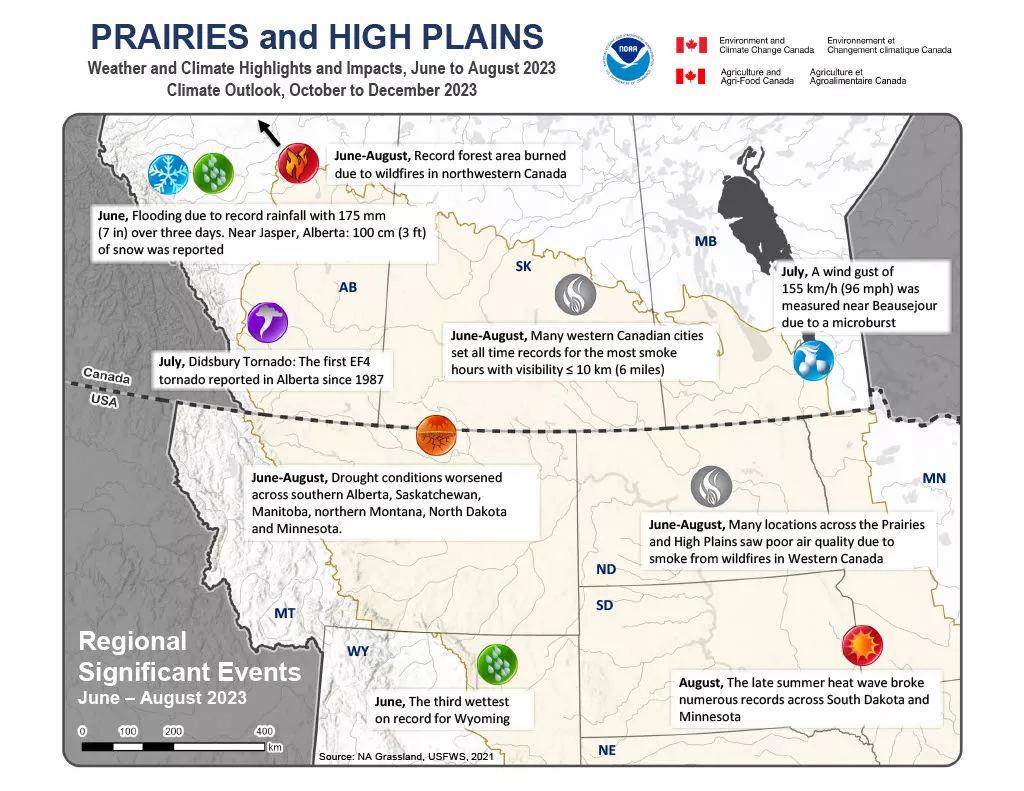In September 2023, NOAA NCEI (National Centers for Environmental Information) and ECCC (Environment and Climate Change Canada) published its first Prairies and High Plains Climate Bulletin, the newest addition to a series of regional binational climate bulletins that began in 2012 and are published quarterly between the two agencies. This latest bulletin joins the other joint climate bulletin publications that cover Alaska and Northwestern Canada, the Great Lakes Region and the Gulf of Maine Region.
The new Prairies and High Plains Climate Bulletin provides a recap of climate conditions during the previous season as well as highlights impactful events across the Canadian Prairies and the Northern Plains of the United States.

In addition to providing a recap of the previous season, this bulletin also provides a regional temperature and precipitation forecast for the upcoming season. With the emergence of El Nino, the bulletin sheds some light on how El Nino generally affects the North American weather pattern and what to expect for this region from a typical El Nino fall and winter.
Work on the Prairies and High Plains climate bulletin started in the Fall of 2022 and its publication is the result of collaboration between many agencies on both sides of the border: Meteorological Service of Canada, Agriculture and Agri Food Canada, USDA Northern Plains Climate Hub, USDA Midwest Climate Hub, NOAA's Central Region Climate Services Director and state climatologists from Minnesota, Montana and South Dakota.
“Climate impacts have no boundaries so it is essential to work across our common border to address impacts and future implications of major events that affect both Canada and the U.S.,” said NOAA Central Regional Climate Services Director, Doug Kluck. “Like we have done for the other regions, our government and extension service agencies are continuing to collaborate to provide useable information for those who live along this binational border.”
Check back quarterly on drought.gov to find the latest installment of this and the other climate bulletins.
